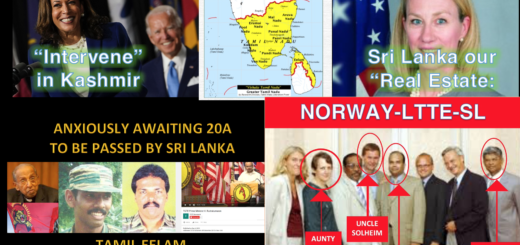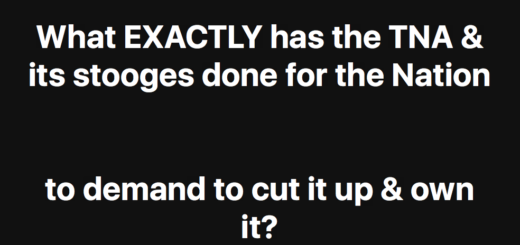For thirty eight years there has been little or no mention and complete silence in acknowledging the fact that scores of Sinhalese braved death to protect and give safe haven to their Tamil neighbors and friends. This all important piece of information has been purposely left out of every commemoration event held as Black July. The silence or neglect of acknowledging the role of the Sinhalese in giving refuge to Tamils in their own homes, feeding, clothing and providing shelter has gone unrecognized and completely shunned by media and the analysts and commentators coming forward yearly to describe the events of 1983 July. It is no better a time than now to give credit where credit is due and finally appreciate the magnanimity and compassion of the Sinhalese who opened their homes to Tamils even those they did not know.
Background to 1983 riots
- On the 15th of October 1981, Tamil militants killed two soldiers of the Sri Lanka Army and from 1981 to 1983 July; nearly 35 members of the armed forces were killed in the North. The militants disrupted the civil administration.
- Public transport was crippled due to setting CTB buses on fire. Banks were robed. The tension was rising in the South.
- On Saturday 23rd July 1983 / 11:30p.m. ambushed an army patrol in Thirunelveli, near Jaffna. First a road side bomb was detonated and thereafter LTTE fighters fired upon the convoy. One officer and 12 soldiers died immediately. 2 other soldiers succumbed thereafter, totaling 15 deaths.
- Sunday 24th July – It was decided not to have the funerals of the soldiers in Jaffna or to give the bodies to families lest funerals at multiple locations may spark violence thus the choice to bring the bodies to Colombo. With large crowds gathered it was only around 10pm. that the announcement to give the bodies to the families was made. The crowds it must be noted were mostly from the wanathamulla area of slums and it was these crowds that began the first acts of violence.
- Monday 25th July – While JR Jayawardena was holding his security council meeting the entire Fort was in virtual flames. It was only at 6p.m. the President announced a curfew.
- Thursday 28th July – President Jayawardena makes a state address.
- Media guilt – media played a crucial role in the 1983 riots. The local media fuelled the tensions. These newspapers used ethnic stereotyping and ethnic prejudices as well as dramatization of ethnic events to set emotions aflame. Sinhalese and Tamil media were guilty of slinging hate messages against each other.
- The number of dead is said to be 300-350 though media enjoy bloating the number to 1000-2000 – luckily it has not gone to the extent of figures being quoted during the last phase of the war with numbers falling from the sky without names of course.
- The International Commission of Jurists in their report declared that 50 of the 350 deaths were of Sinhalese. The ICJ report also declared that some of the homes/businesses of Tamils were self-inflicted – to either collect insurance or to make it easier to apply as refugees. Some Tamils even pretended to be victims and lied their way abroad.
- Looting and looters – As in all cases of looting, there is no ethnic, religious or other factors except the sole inspiration to gather whatever goods they could gather. These looters for Sinhalese, Muslims and even Tamils. They were all thugs, ruffians or connected to the underworld. This aspect has been totally left out of all discussions. The houses or businesses that were set on fire were by the same people that ended up looting the places.
- If voter lists were given it could not have been a coincidence that only Tamil Hindu shops and Tamil Hindus were killed.
There are many other factors that have been purposely left out or omitted from discussion.
Role of RAW in 1983 :
- What needs to be taken to consideration at all times is that the RAW operation in Sri Lanka was meant to destabilize the JR Government elected to power in 1977. When unemployed Sri Lankan Tamil youth taken to India, trained in arms and guerilla warfare, funded to start an insurgency there has to be an event to bring them out into the open and give sufficient reason as to why they took up arms. 1983 was that watershed moment that could give legitimacy to clandestinely trained groups. We are well aware that todays conflicts arise as a result of engineered events and 1983 cannot be ruled out as being one such event.
- The Jain Commission report suffices to put to rest the notion that LTTE and armed militant groups did not emerge after 1983. Sri Lankan Tamil groups were taken to India and trained clandestinely as far back as 1977 and then sent to Sri Lanka under the tutelage of RAW.
- Arms, ammunition and other materials supplied by India were those that killed the 13 soldiers in July 1983 after numerous futile single shootings of soldiers did not generate the backlash that was part of the plan.
- The refugee exodus to India provided an alibi for the Indians to intervene and was part of the stage managed tactic.
Tamils & UNP:
- The blame for the destruction of the Jaffna library and the July 1983 rests solely with the UNP Government.
- There is no spontaneity when voter lists have been given to thugs and underworld gangs operating under the patronage of the UNP. JR took the opportunity to shrewdly shove the blame upon the Sinhalese without admitting the guilt of the government.
- The question of who actually benefitted from the 83 riots will answer a lot of questions. It is the same recipients that longed for another 83 for these would provide golden opportunities. The statistics will reveal the beneficiaries. Today almost 1million Tamils live as either refugees or hold green cards and foreign citizenship. From this number and through other illicit and illegal activities, LTTE was able to make $250-300m profits annually.
- There is little mention of the uproar inside the refugee camps where Tamils of all castes found themselves but did not wish to even in their common sorrow share the toilets with one another. The same scenario arose in the refugee camps after the final war wherein the army had to prepare separate toilet facilities for the Brahmin high castes, so even these areas were catered to by the armed forces.
- We also seem to have forgotten what the JR Government did in 1982 by not holding an election but holding a referendum to extend the term of the UNP
Other myths and inaccurate references:
Blaming Sinhala Buddhists
- The efforts to single out Buddhists and lay blame on them and create situations that divide Buddhists from the rest of the citizens in Sri Lanka are many.
- Immediately after the riots Anandatissa de Alwis, Minister of Communications and Constitutional Affairs did not hesitate to add that Christians would be next target thereby creating the division between Sinhalese Buddhists and Sinhalese Christians. The media under non-Buddhist hands were quick to do the rest. Thus, the media shunned the brave efforts made by Sinhalese Buddhists to save the Tamils.
- It is important therefore that the Sinhalese Buddhists do not shoulder any guilt or self-blame for what the UNP was instrumental at creating and what the conniving others later manipulated upon.
- Proof is in the pudding – it is because the Sinhalese Buddhists were not violent in 1983 and continue to follow the path of non-violence that even after LTTE mayhem and terror struck Sinhalese Buddhists even their places of worship and Buddhist clergy they did not react and attack.
- A single incident (unrepeated since 1983) has taken the global stage over 3 decades whereas over 300 attacks by LTTE get little global attention or mention. Thus, if 1983 was a revenge attack for killing 13 soldiers why did the same revenge not take place for over 300 LTTE attacks?
- Why do those that fund and sponsor commemorative events of 83 July not do the same for LTTE attacks?
Sinhala Only Act
- What needs to be made clear is that neither Sinhalese nor Tamil were the language of administration during colonial rule. The Sri Lankan leaders (Sinhalese-Tamils-Muslims) were all English educated and spoke and wrote in English. They were the elite of the Sri Lankan society.
- Tamil never held official language status in pre-colonial times. Sinhalese language did.
- Tamil never held official language status during colonial rule either.
- There were more Tamils brought from India than the Tamils who had migrated from Tamil Nadu and been living in Sri Lanka even at independence.
- Therefore, how can the introduction of the Sinhala Only Act deny Tamils their Tamil language status, when there was no status for Tamils under Sinhala Kings or during colonial rule? There was nothing lost for Tamils to claim grievance. However with the 1987 Indo-Lanka Accord and the 13th amendment Tamil language was given not only official status today the rest of the 90% have to learn Tamil too.
- How did Sri Lanka’s leaders fail to question why objections to the Sinhala Only Act should end up with signing a devolution package with Chelvanayagam?
There is no need for the Sinhalese people to apologize for 1983. If at all any apology is due it is from the UNP Government. The people had nothing to do with the riots and those that eventually took part were ruffians belonging to all castes, creeds and religions for they had a field day looting businesses and homes.
What is also omitted from mention is that Tamils have always preferred to live amongst the Sinhalese. Even at the height of LTTE terror, Tamils did not desire to remain amongst the LTTE and even now post-conflict Tamils prefer to live amongst the Sinhalese.
Now into the 38th year since 1983 it would be nice if the Tamils came out with a public acknowledgement that 83 was not the fault of the Sinhalese (in particular the Buddhists) and also publicly acknowledge that the Sinhalese sheltered and looked after the Tamils and even their belongings. That gratitude and thank you has yet to be forthcoming and instead large sums of money is spent on funding commemorations aimed at demonizing the Sinhalese.
Shenali D Waduge







